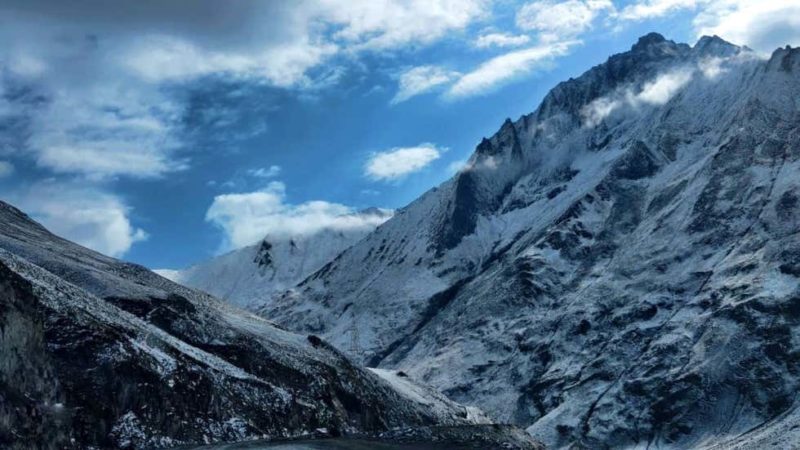Introduction
The workshop on “A Review of the Causes and Consequences of Cold Events: A La Niña Summit” was convened in Boulder, Colorado (USA) on 15-17 July 1998. Michael Glantz, Senior Scientist at the National Center for Atmospheric Research (NCAR and convener of the workshop, opened the La Niña Summit. He welcomed the 80 participants from 14 countries on behalf of the United Nations University (UNU), the UN Environment Program (UNEP), NCAR, and the US National Science Foundation S G). He noted that the discussions of the La Niña Summit would be carried real-time in audio and on the Internet by the Exploratorium (San Francisco, California) at http://www.exploratorium.ed/la_nina. He introduced Dr. Richard Anthes, President of UCAR (University Corpora -ion for Atmospheric Research), who welcomed the participants to the first works focused on La Niña, cold events in the tropical Pacific Ocean. Anthes commented on the importance of La Niña and El Niño research and its potential benefits to societies around the globe.
Peter E.O. Usher, Head of UNEP’s Atmosphere Unit (Nairobi, Kenya), greeted the participants on behalf of the UN sponsoring agencies, the UNU and UNEP. He recounted the history of UNEP’s concern with the ENSO (El Niño-Southern Oscillation) cycle since the mid-1980s, when UNEP, in cooperation with NCAR, formed the UNEP Working Group on the Socioeconomic Impacts Associated with ENSO. He mentioned the numerous workshops and publications carried out by the Working Group. He also noted that ENSO research served as a bridge between the climate change and the climate variability research communities.
Glantz then highlighted to the participants the reasons for convening the La Niña Summit. He noted that the overriding goal of the Summit was to encourage a review of the causes and the physical and societal consequences of La Niña (cold) events and to identify what was known and not known by researchers about La Niña and to identify what societies need to know about the phenomenon. The reason to know more about La Niña (and El Niño) is to improve the reliability and credibility of ENSO-related forecasts so that societies could better prepare themselves for their adverse, as well as beneficial, impacts. It was a first attempt to have scientists focus on La Niña, through their discussions with forecasters, social scientists, climate impacts and forecast application researchers and to help to identify and lay out what potential users of La Niña information (including La Niña forecasts) might be able to consider as reliable information about cold events.
This workshop was NOT an attempt to forecast whether the recent strong 1997-98 El Niño would be replaced by a La Niña, when that replacement might be expected to take place, the magnitude of the potential La Niña, or what La Niña’s impacts on particular societies and ecosystems might be.
The idea to convene such a workshop was developed very early in 1998 and was in direct response to the media coverage (some say hype) of the 1997-98 El Niño event, one of the biggest in a century, and to the beginning of talk of the eventual development of a strong La Niña event later in the year. It had become clear from media coverage and interviews with scientists that much less was known about La Niña and its possible societal impacts in comparison to El Niño. For whatever reason, it was a phenomenon that had not received much scientific or media attention in the past couple of decades.
Another workshop objective was to bring together as many as possible of the key El Niño researchers and representatives of the climate-information-user community to discuss what was known about La Niña’s scientific dimensions and societal impacts. In addition, representatives of the media were invited to the workshop as participants as well as potential reporters of its proceedings. Media interest in the summit was surprisingly high. With respect to educating the public about La Niña (or cold events), we (i.e., physical, biological, and social scientists and the media) are in a good position to identify and avoid some of the false expectations that would likely accompany the misperceptions and misinformation about La Niña.
As has been suggested in the popular literature, the extremes of the ENSO (warm/cold event) process in the equatorial Pacific are among the major climate-related disrupters of human activities, bringing droughts, floods, and other severe meteorological events to various parts of the globe. The more that societies learn about the entire ENSO process, the better prepared they can become to cope with the regional extreme events that tend to accompany it.
The following sections of this report present information from each of the workshop sessions in the order in which they appeared in the agenda: A Review of the 1997-98 El Niño Event, Definition(s) of La Niña, What Constitutes Normal, La Niña Teleconnections, The Impacts of La Niña on Specific Countries and Sectors, Climate Change and the ENSO Process, Symmetry Issues, Attribution of Impacts to ENSO Extremes, Media Panel, Forecasting the 1997-98 El Niño, Forecasting the Onset of a La Niña in 1998-99, Differences in Forecasting El Niño and La Niña, and Monitoring La Niña. It is important to note that the information presented under each topic was not mutually exclusive and was frequently referred to in other sessions as well. Thus, similar issues were raised in more than one section.
View report below or download it here
A-La-Nina-Summit-A-Review-of-the-Causes-and-Consequences-of-Cold-Events

